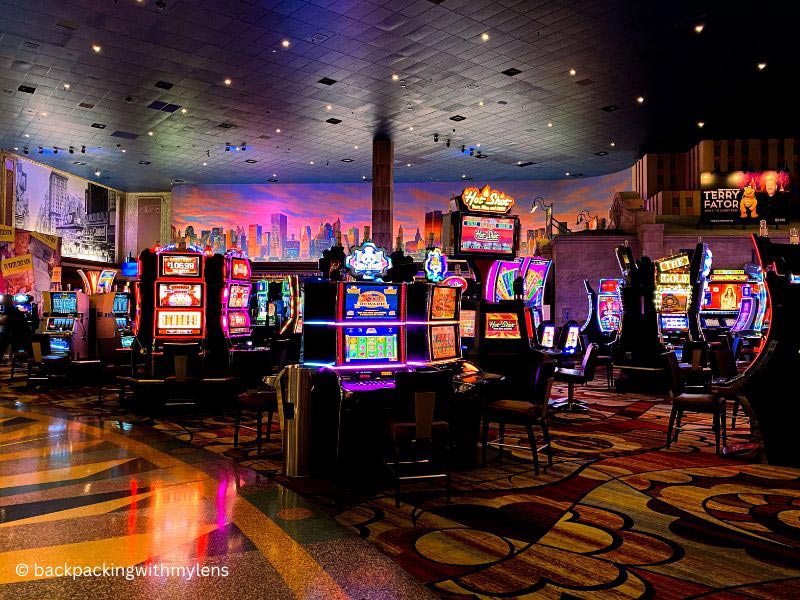
Casino experiences have long captivated people’s attention, drawing players into a universe filled with luck, strategy, and the allure of adventure. Each experience is carefully crafted not just for entertainment, but also to evoke particular emotional responses that keep players immersed and committed. Understanding the drives behind these designs reveals much about how behavioral psychology plays a vital role in the gaming experience.
From the bright lights and dynamic sounds to the complex layering of rules and incentives, casino games are designed to create an atmosphere of anticipation and anticipation. Game designers leverage mental cues to influence participant behavior, whether through the use of big prizes, almost wins, or social connections. By examining these aspects, we can better appreciate how casino games fulfill not just a need for entertainment, but deeper psychological needs for thrill and risk. RR88
Understanding Player Behavior
Casino games are crafted with a profound comprehension of player psyche, which is essential for luring and holding players. The thrill of the game, coupled with the hope of winning, creates a strong allure. Game designers make use of elements like sound effects, vibrant graphics, and captivating gameplay to capture attention and elicit emotional responses. These sensory elements enhance the total environment, making players feel more attached in the game.
Another important aspect of player behavior is the concept of risk/reward dynamics. Casino games often balance high-risk scenarios with the potential for considerable rewards, which can lead to the occurrence known as near-miss phenomenon. When players come within reach to winning, the brain releases dopamine, bolstering their behavior and motivating them to keep playing in search of that hard-to-reach win. This cycle of anticipation and disappointment plays a key role in how games are designed and advertised.
Lastly, social elements also play a pivotal role in player behavior at casinos. Many games are made to be played in teams or alongside other players, fostering a sense of belonging and communal experience. The social interaction inherent in games like baccarat enhances enjoyment and can result in prolonged gaming periods. Designers take advantage on this by designing environments that invite players to remain, connect, and return, making the overall casino experience more attractive.
The Role of Imagery and Sound
Imagery and audio play a significant role in improving the player’s experience within gambling games. Designers utilize bright colors, eye-catching graphics, and captivating animations to capture players’ attention and maintain their focus. RR 88 The use of motifs, such as adventure or opulence, helps create an immersive atmosphere that transports players into another world. By appealing to the senses, these elements contribute to a intensified emotional response, encouraging players to interact more deeply with the games.
Audio design is equally important in reinforcing the overall experience of gambling games. The combination of ambient music, audio effects for winning combinations, and environmental noises creates an sound landscape that keeps players fascinated. Audio cues associated with wins, such as chiming bells or festive music, evoke feelings of thrill and satisfaction, encouraging players to keep playing. These audio cues are carefully placed to enhance the excitement of the game and create a more engaging experience.
Additionally, the alignment of imagery and sound is crucial for reinforcing the game’s overall theme and mood. Each element should coordinate seamlessly to create a cohesive experience that draws players in. The effective use of this synergy not only improves user enjoyment but also increases the likelihood of return play, as players become more invested in the captivating world that the gambling games offer. This thoughtful integration of visuals and audio ultimately enhances player involvement and commitment.
Incentive Systems and Engagement
The development of gambling experiences greatly relies on incentive systems to ensure players engaged and returning for additional experiences. These systems are rooted in behavioral theories that exploit human behavior and motivation. Participants are often driven by the excitement of winning, which is supported by immediate feedback through the game structure’s design. This prompt satisfaction not just enhances the overall experience but also cultivates a sense of achievement, prompting participants to keep participating in hopes of bigger rewards.
Gaming establishments implement various reward structures, such as large payouts, bonuses, and multipliers, to engage players. These elements create a level of thrill that maintains interest. Additionally, the unpredictability of outcomes plays a significant role in sustaining interest. The variable reward system, where wins are unpredictable but occur often enough, keeps participants on edge and driven to keep playing. This loop of hope and anticipation is foundational to the effectiveness of gambling experiences.
Furthermore, community aspects, such as competitive events and collaborative options, boost the participation factor by leveraging the competitive nature of players. The shared experience of playing with others can intensify the thrill of winning and create a community atmosphere within the gaming space. By integrating these community elements with efficient incentive structures, gambling experiences don’t just offer entertainment but also nurture a stronger bond among players, reinforcing their loyalty to the gaming experience.
